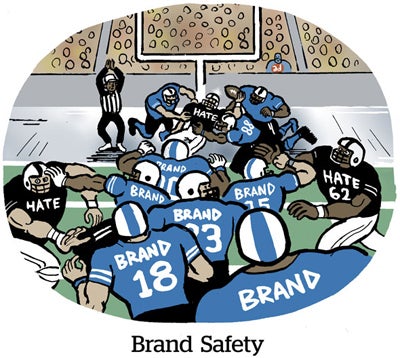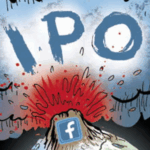Advertisers have many reasons to be jittery, like identity signal loss, MFA sites and divisive news media.
But their worries are Integral Ad Science’s gain, drumming up demand for the company’s ad verification and measurement services.
Take third-party cookie deprecation, which “will increase demand for solutions because our technology focuses on the what and the where, and never on the who,” IAS CEO Lisa Utzschneider told investors during a quarterly earnings report on Tuesday. As cookie-based campaign targeting and measurement vanish for marketers, “we strongly believe that IAS can fill those gaps using more context and introducing new metrics, like attention,” she said.
The US presidential election is another area of opportunity for IAS. Advertisers have been asking for a misinformation segment to be embedded within IAS’s media quality product, Utzschneider said. IAS plans to launch this capability in the first half of 2024, ahead of the election.
IAS earned $474.4 million last year, up 16% from 2022. In Q4, revenue increased 14% YOY from $117.4 million to $134.3 million.
IAS expects to grow about as much again this year, with 2024 revenue forecast to be between $530 million and $540 million. Although that’s with the help of the Summer Olympics and the US presidential election.
Revenue breakdown
Optimization revenue (formerly categorized as programmatic revenue) grew 18% in Q4 to $224.5 million. IAS credited its contextual advertising product, which grew by double digits year over year, as a growth driver. CFO Tania Secor mentioned the contextual product’s integration with Amazon Ads and the addition of more DSP partners.
Measurement revenue rose 18% annually and totaled $52.6 million in Q4. Much of that lift came from social media – where IAS particularly benefits from growth in short-form video. Social media revenues climbed 37% YOY (though IAS doesn’t break out revenue) and represented 49% of IAS’s Q4 measurement revenue.
The remaining 13% of revenue came on the publisher side, which increased 2% from $17.6 million to $18.1 million in Q4.
Notably, 87% of total Q4 ad revenue stemmed from large advertisers, or those with annual revenues of more than $200,000. IAS had 222 large advertisers, up 12% from the previous year, according to Secor.
Strength in social
In IAS’s experience, brands want to make sure their campaigns show up next to safe and suitable content. That demand is especially great on social media platforms, which have plentiful users and don’t report where advertiser ads appeared (or what they appeared next to).
Social isn’t slowing down, either.
“We expect Meta to be one of our largest growth drivers in 2024,” Utzschneider said. About half of IAS’ social customers advertise on Meta, which opens up chances to upsell other offerings. The company began testing its AI-driven brand safety and suitability measurement product for Facebook and Instagram feeds and Reels in Q4. Earlier this month, it launched to all IAS customers.
IAS is also working with TikTok, YouTube and X. For TikTok, it rates media quality in more than 50 markets. The number of active post-bid campaigns on TikTok grew by more than 350% in 2023, while the number of tracked ads grew by more than 550%, Utzschneider said. Although that likely signifies that the baseline number is relatively small.
“I’d put TikTok at fourth inning, fifth inning. YouTube, third inning,” Utzschneider said. “We expect to ramp adoption throughout 2024 and into 2025.”













